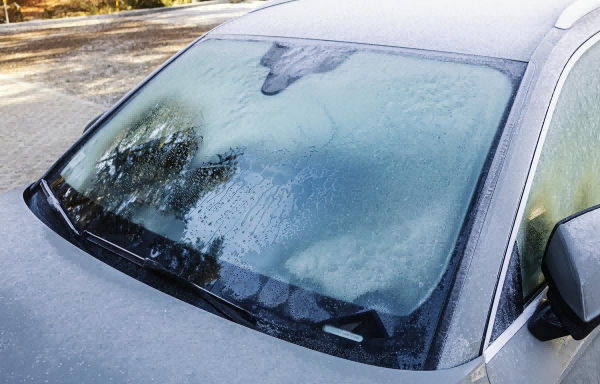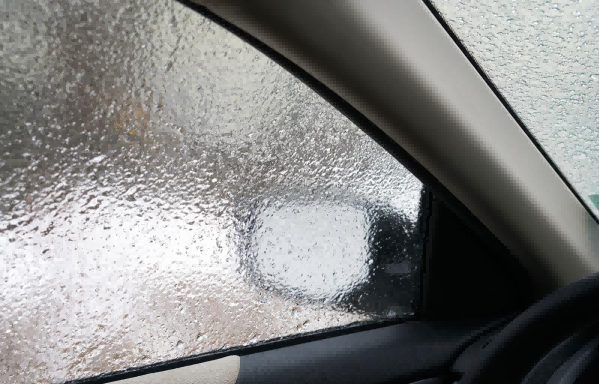Types, characteristics and maintenance and repair techniques of car glass
Automobile glass, as an essential accessory of the vehicle body, not only concerns the clarity of the driving view but also bears the significant responsibility of safety protection. With the advancement of technology, the types and characteristics of automobile glass are continuously upgrading to meet the increasingly stringent demands for safety and comfort. This article will comprehensively introduce the types, characteristics, as well as maintenance and repair techniques of automobile glass, helping car owners better understand and maintain their beloved vehicles.

1. Types of car glass
According to its function and manufacturing materials, car glass is mainly divided into the following categories:
1. Laminated glass:
Laminated glass consists of two or more pieces of glass with one or more layers of organic polymer interlayers in between. After undergoing special high-temperature pre-pressing and high-temperature high-pressure processing, the glass and interlayers are permanently bonded together. When this type of glass is shattered by impact, the fragments are held by the interlayers and do not fly around, ensuring the safety of occupants. Most car front windshields use laminated glass design.
2. Tempered glass:
Tempered glass is made by heating the glass to near its softening point and then rapidly cooling it, which enhances its strength and thermal stability. Once broken, tempered glass shatters into small, blunt particles that resemble honeycombs, making it less likely to cause serious injury. It is commonly used in car doors, sunroofs, taillights, and side windows.
3. Regional tempered glass:
Regional tempered glass is a type of tempered glass that controls the tempering process in different areas. Once broken, it generally meets the requirements of safety glass for the cracked fragments, while also providing a view area that does not interfere with driving. This type of glass is sometimes used for car windshields.
4. Bulletproof glass:
Bulletproof glass is often used in special vehicles, such as bulletproof cars. It is made by bonding more than two pieces of inorganic or organic glass and PVB film together at a certain temperature and pressure to prevent bullets from penetrating. Ordinary consumers have less contact with it and the purchase method is more complicated than ordinary glass.
5. Safety glass:
Safety glass is a broad term, usually refers to the glass with safety protection function, such as laminated glass and tempered glass. The state has strict requirements on its light transmittance, strength and wear resistance, generally installed in cars and other vehicles, can effectively reduce the chance of injury in car accidents.
2. Characteristics of automobile glass
Automobile glass not only has safety protection performance, but also plays an important role in heat insulation, noise reduction and other aspects:
1. Safety protection:
Laminated glass and tempered glass can withstand strong impact force, effectively prevent the injury of people after the glass breaks. Especially in the event of a car accident, it can maximize the safety of drivers and passengers.
2. UV filtering:
Laminated glass filters about 100% of UVB (medium wave ultraviolet) and 94%-98% of UVA (long wave ultraviolet), providing up to 50SPF UV protection. Tempered glass also filters 65%-75% of UV, providing about 16SPF UV protection.
3. Heat insulation and noise reduction:
Under the sun, laminated glass can reduce the temperature of the car by about 10℃ compared with tempered glass under the same conditions. At the same time, car glass can effectively isolate the noise outside the car and improve the comfort of driving.
3. Three, the maintenance skills of car glass
In order to extend the service life of car glass and maintain its good performance, car owners should pay attention to the following maintenance tips:
1. Rational use of glass water:
Choose the right glass water according to the season and weather. Glass water is mainly used in summer to remove residual flying insects, and anti-freezing glass water can prevent freezing at low temperatures in winter.
2. Apply high quality heat insulation film:
The light transmittance of the front windshield must be greater than 70% to ensure driving safety. Selecting a high uv resistant heat insulation film can protect the components of the central console and prevent premature aging from long-term exposure to the sun.
3. Clean the wiper regularly:
Dust from the air and oil from vehicle exhaust can stick to windshields and wipers, causing scratches. Regular cleaning of wipers can reduce the risk of scratches.
4. Avoid parking in bad conditions for a long time:
Try to park your car in the garage and avoid direct exposure to sunlight or frost. If parked outdoors, it is recommended to use a car cover to protect the windshield.
4. Fourth, the repair skills of car glass
In the process of use, car glass will inevitably appear scratches, cracks and other problems, some minor damage can be restored by repair:
1. Resin filling method:
For smaller cracks or scratches, the resin filling method can be used for repair. Fill the crack with specialized automotive glass repair resin and then cure it with a UV light. This method can restore the strength and transparency of the glass, making the crack almost invisible.
2. Filling method:
For larger cracks or pits, the grouting method can be used for repair. Liquid resin is filled into the cracks to eliminate gaps. The primary tool is a vacuum syringe with a needle-like structure, which functions to remove air from the glass wound and then fill it with glass filler. After several cycles of suction and pressure, at least 90% of the repaired space will be filled with the filling liquid. At this point, ultraviolet light is used to cure the filling liquid.
3. Polishing treatment:
For some small scratches, polishing liquid can be used to polish the scratches, so as to smooth and repair. This method is suitable for shallow scratches, which can restore the smoothness and gloss of the glass.
5. Conclusion

Car glass, as an essential component of vehicles, not only concerns the clarity of the driving view but also bears the significant responsibility of safety protection. Understanding the types, characteristics, and maintenance and repair techniques of car glass is crucial for ensuring driving safety and enhancing driving comfort. Car owners should regularly inspect and maintain their car glass, promptly repairing any damage to ensure it functions properly in critical moments. At the same time, car owners should also enhance their safety awareness, abide by traffic rules, and ensure safe driving.


